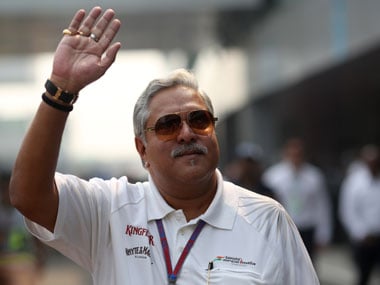Had it been the case of an individual’s home or auto loan default, banks would have pounced upon the borrower within a matter of days once the asset is tagged bad. But, surprisingly, when it comes to Vijay Mallya - one of India’s largest loan defaulters - lenders seem to have a developed a cold feet. What else could explain the delay in taking action on Mallya, who owes not less than Rs 7,000 crore to a clutch of 17 banks, many of them are public sector banks. Take these two instances: Even though Kolkata-based United Bank of India, a weak institution on account of high bad loans, had classified Mallya as a wilful defaulter in September last year, the decision was nullified by the Kolkata High Court on technical grounds. The court observed that the grievance redressal committee - the panel that declares a borrower defaulter - of the bank was not constituted as per regulatory guidelines set by the Reserve Bank of India (RBI). it had four members, while it should have had only three. After the order, the bank, which has about Rs 350 crore exposure to Mallya, has reconstituted the committee. However, it has not taken any further steps on due recovery from the flamboyant business man, let alone reclassify him as a wilful defaulter. [caption id=“attachment_2234274” align=“alignleft” width=“380”]  Reuters[/caption] On Thursday, P Srinivas, managing director and CEO of United Bank, said it is awaiting the decision of a court on tagging the company as wilful defaulter. In another instance, State Bank of India (SBI), the bank that has the biggest exposure to Mallya with an outstanding of about Rs 2,000 crore, too have gone surprisingly slow on pinning him down. The bank has not classified Mallya as wilful defaulter even though a smaller bank with a much less exposure did so some eight months back. Speaking to Firstpost a senior official at the bank said the bank has not taken any action yet on Mallya. “Not yet. It is time consuming,” said the official who didn’t want to be named. The problem with time is that there would be nothing much left for banks, factoring in the value erosion of the underlying asset. The only action SBI has taken so far is to take possession of Kingfisher House in Mumbai in February this year. Auctioning this asset would have helped the bank to recover at least part of the dues. But that plan too fell apart after IT department too claimed the first right to have its pound of flesh. “This too is sub-judice,” the official said. Once tagged wilful defaulter, a company and its promoters are ostracised from the financial system. Neither will the company and the promoter be able to borrow from any financial institution nor can they be part of any listed companies. But since Mallya is not a ‘wilful defaulter’, he is technically free to do all these, though no one in good sense would lend to Mallya. Along with Mallya and Kingfisher, United spirits too stands to face action in the case. According to a September clarifications from the RBI, even the guarantors of a company, which have been tagged as wilful defaulter will be classified with the same tag if the guarantor fails to pay the bank if the principal borrower defaults. “As such, where a banker has made a claim on the guarantor on account of the default made by the principal debtor, the liability of the guarantor is immediate. In case the said guarantor refuses to comply with the demand made by the creditor/banker, despite having sufficient means to make payment of the dues, such guarantor would also be treated as a wilful defaulter,” the RBI had said. Unfortunately, here too, none of the banks have so far managed to take action against United Spirits. Beyond an individual case, banks’ approach to Kingfisher is highly critical as it can set a precedent to several other cases where promoters have defaulted payments to banks even though they have the capacity to pay back. As mentioned earlier, the longer the action on the defaulter gets delayed, the value of the assets erodes further, leaving nothing much to banks. In Kingfisher’s case, the value of assets pledged to the bankers — the brand and the equity transferred to the lenders — have eroded sharply. Had there been a strong bankruptcy law, like in the west, banks could have recovered a meaningful part of their assets long back. For Mallya too, this would have helped to insulate his empire from the Kingfisher disaster. Since there is no such provision, both Mallya and the banks stand to lose. Interestingly, according to reports, the Mumbai International Airport Ltd (MIAL), has decided to sell Kingfisher’s 39-odd vehicles and other ground support equipment as scrap. Last month, the airport operator had last month sold one of Mallya’s personal jet for Rs 22 lakh to a Kurla-based junk purchaser. Perhaps, our bankers can take a lesson or two from MIAL. As Firstpost noted before, Kingfisher is somewhat a lost battle for banks already. But, there are questions that need to be answered on why banks continued to lend to Kingfisher and recast its loans despite strong warnings on a deteriorating balance sheet of the company. Was this is a classic example of banks wasting depositors’ money, funding cronies with blessings of political bosses? If left unchecked, wilful defaulters can take the Mallya’s route and drag lenders to court rooms to delay action, leaving public sector banks as mere pubic sector bakras. After all, tax-payers’ money is at stake.
If left unchecked, wilful defaulters can take the Mallya’s route and drag lenders to court rooms to delay action
Advertisement
End of Article


)

)
)
)
)
)
)
)
)



